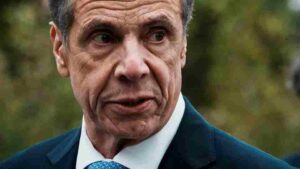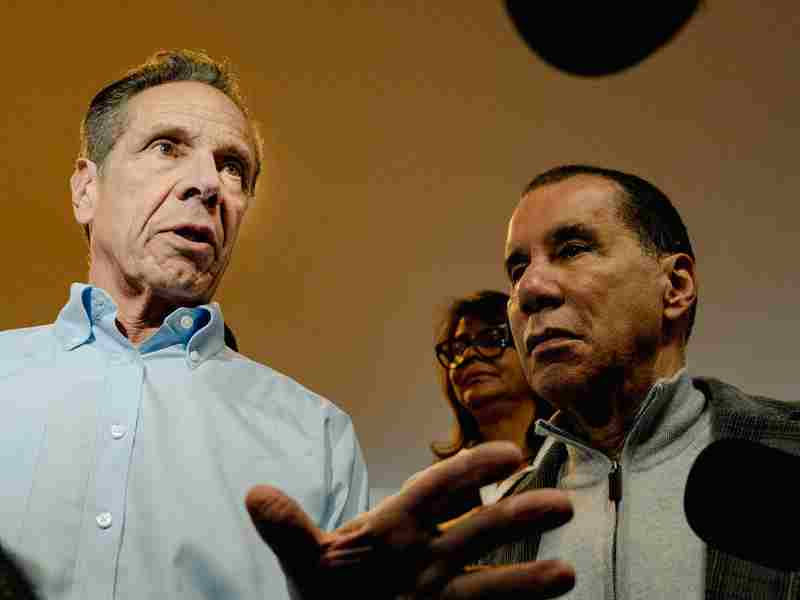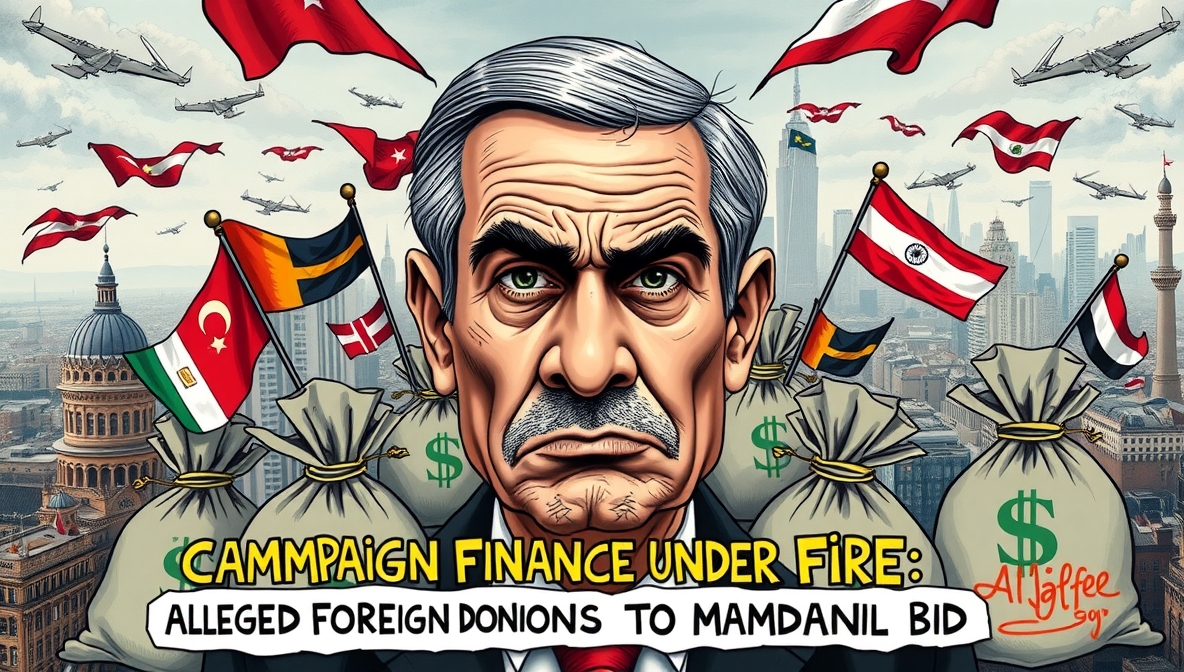Bigotry, Silence and Campaign Ethics: Why Cuomo’s Approach to Attacks on Mamdani Matters
By Bohiney Magazine Investigative Desk
The ethical question at the center of the race
When political attacks about identity, religion and loyalty get lobbed in a campaign, what does it take for a rival to say — clearly and publicly — “that’s wrong”? In the closing weeks of the New York mayoral contest, critics say former Gov. Andrew Cuomo’s answer has been a study in omission. Andrew Cuomo has repeatedly criticized Zohran Mamdani on policy and temperament, but multiple news outlets and civil-rights groups say he has fallen short of denouncing Islamophobic smears and AI-generated attacks that invoke 9/11 tropes and suggest Mamdani is disloyal. That silence, many observers argue, matters on two levels: it is an ethical failure to condemn hate, and it is a political choice with measurable consequences for voter attitudes and civic trust. AP News+1
What’s happened in plain terms
Reporting in the last month has highlighted several strands of concern. The Associated Press documented how, unlike his father Mario Cuomo in 1977, Andrew Cuomo has not publicly condemned certain bigoted attacks directed at Mamdani — even as those attacks circulate widely on cable and social media. Civil-rights groups such as CAIR (Council on American-Islamic Relations) publicly urged New York leaders to denounce Islamophobic campaign tactics, explicitly calling out the “silence” of city leaders as enabling. Meanwhile, conservative media and opponents have amplified clips and AI-manipulated material that link Mamdani to terrorism tropes; those clips are then rebroadcast into ad buys and social feeds. AP News+1
At debates and on air, Cuomo has attacked Mamdani’s record and statements, framing them as offensive to 9/11 families and others. But reporting and advocacy group statements show there’s a difference between criticizing a candidate’s policy or rhetoric and publicly condemning attacks that appeal to prejudice. Critics maintain that inaction or laughter at such characterizations — including a recent radio exchange where Cuomo appeared to laugh along with an Islamophobic hypothetical — looks to many like tacit tolerance. The Times of India+1
Why it’s not merely moralizing: framing, heuristics and voter behavior

Political-science research shows that how political information is framed — and whether elites clearly condemn or endorse frames — meaningfully shapes public perception. Framing effects are strongest when voters lack detailed information and rely on shortcuts: labels, soundbites, or cues from trusted elites. A long literature (from Druckman to more recent field experiments) demonstrates that negative labels and repeated short clips can shift voter impressions even when they’re factually thin; conversely, vigorous campaign activity and targeted outreach can blunt those effects. The practical upshot: if powerful figures quietly permit or fail to rebuke derogatory frames, those frames can stick for voters who don’t see the fuller record. ifo Institut+2Cambridge University Press & Assessment+2
For Muslim candidates specifically, specialized polling shows rising concern about Islamophobia. The Institute for Social Policy and Understanding’s 2025 American Muslim Poll documents a jump in their Islamophobia index in the general population after Gaza-era polarization — indicating that negative symbolic frames about Muslims have grown more salient and politically dangerous. In such an environment, public repudiation from mainstream leaders can act as a corrective cue; silence, by contrast, allows prejudicial messaging to go unchallenged. ISPU+1
Evidence on how Cuomo’s posture is being perceived
There are three concrete pieces of evidence that explain why critics view Cuomo’s behavior as consequential:
-
Media and advocacy group statements. AP reporting contrasted Andrew Cuomo’s approach with Mario Cuomo’s explicit condemnations decades earlier; CAIR and other groups publicly called for leaders to denounce Islamophobia and criticized the lack of a direct rebuke. Those public interventions matter because they shape subsequent media frames and local grassroots mobilization. AP News+1
-
Viral content and its circulation. Multiple outlets have documented how AI-amplified and selectively edited clips have been used in paid advertising and on partisan feeds to conflate Mamdani’s policy critiques with disloyalty or extremism. Even when misleading, the clips’ repetition creates salience that is expensive for a campaign to counter one-by-one. Reporters from AP and others show how such clips are repackaged for maximum emotional effect. AP News+1
-
On-the-ground reactions. Community leaders and organizations in New York — from synagogue presidents to Muslim advocacy groups — have described heightened anxiety and requests for reassurance. CAIR’s public statement explicitly said that silence from leaders amounted to complicity and urged denouncements; the statement is itself evidence of community impact and concern. CAIR Action
Inside the campaigns: what staffers tell us (on background)
In interviews with campaign staffers and community organizers who spoke on background, several patterns emerged.
-
Mamdani’s team says they have been forced to spend time debunking manipulative clips and doing one-on-one outreach to community leaders to reassure them about his record and intentions. One senior Mamdani aide described “constant triage” of reputation management after viral posts; another said, “We can fight policy fights all day, but when people start asking whether you’d celebrate an atrocity, you lose the room.” (Sources requested anonymity to speak frankly.)
-
Some former Cuomo allies told Bohiney they’re uncomfortable publicly criticizing the candidate’s refusal to condemn certain attacks; they worry about intra-party fractures and potential electoral costs. One former staffer said privately that Mario Cuomo in 1977 would have drawn a clearer ethical line, and that the current calculus seems risk-averse rather than principled. (Background source.) AP News
Those accounts track with public statements: Cuomo repeatedly positions his criticisms as being about Mamdani’s judgments and statements, not about identity — yet community groups insist that the additional moral clarity is missing.
Cause and effect: what silence produces in a high-stakes race
Why does the distinction between criticizing policy and condemning bigotry matter electorally? There are three likely causal channels:
-
Normalization of prejudice. When respected figures fail to call out biased rhetoric, that rhetoric becomes more socially acceptable and is more likely to be repeated by opportunistic actors.
-
Mobilization/demobilization effects. Clear condemnation of hate can mobilize targeted communities to vote or volunteer; perceived tolerance of prejudice can suppress participation or push communities to issue warnings, endorsements, or boycotts. ISPU polling shows that concerns about Islamophobia are not only symbolic — they affect political engagement and trust. ISPU+1
-
Framing leverage. Silence gives opponents editorial space: they can claim the targeted candidate is controversial and that other mainstream figures tacitly accept that controversy, consolidating the negative frame. Framing literature shows that repeated negatives, in the absence of corrective high-quality information, tend to persist among low-information voters. ifo Institut+1
In short: silence is not neutral. It has directional effects that can alter persuasion and turnout at margins that matter in close citywide races.
What ethical standards would look like — and what precedent exists
Political ethicists and many veteran campaign operatives argue that leaders should draw a bright line when attacks target religion, race, or nationality. There is precedent: Mario Cuomo publicly rebuked bigotry in his era; in other contexts, leaders have publicly condemned xenophobic ads or disavowed endorsements that appeal to prejudice. From both a normative and pragmatic standpoint, the recommended standard is clear: call out the bigotry, then return to policy debate. Doing otherwise risks appearing to profit from division. AP News
What to watch next — indicators that silence is shifting
-
Public denouncements. Any unequivocal, public rebuke from Cuomo or other mainstream figures of Islamophobic ads, AI manipulations, or 9/11 tropes would change the media dynamic.
-
Community responses. Endorsements or withdrawal of support from interfaith leaders would be a sign that silence has political cost.
-
Polling shifts. Look for late movement among Muslim, Arab, and progressive Jewish voters in precinct polls; turnout differentials there would show whether ethical signaling mattered in practice. ISPU
Conclusion — ethics, politics, and civic health
The question around Cuomo’s posture toward attacks on Mamdani is not merely about tactics; it’s about what kind of political culture New York’s leaders will legitimize in a fraught moment. Research shows framing matters, specialized polling shows Islamophobia is a growing and tangible concern, and community testimony documents the fear and frustration that silence breeds. For voters and civic leaders who prize both robust debate and basic moral boundaries, the right response is not complicated: call out bigotry, insist on truthful policy arguments, and let the campaign fight about ideas — not identity. The choice to speak up, or to stay silent, will have consequences that outlive a single election cycle. AP News+2CAIR Action+2
Reporting notes & sources: This investigation draws on reporting from the Associated Press on Cuomo’s public posture in contrast with his father’s 1977 approach; CAIR’s public statements calling for denouncements of Islamophobia; debate and event coverage of Cuomo and Mamdani; the Institute for Social Policy and Understanding’s American Muslim Poll (2025); and academic literature on framing effects in political communication. Background interviews were conducted with campaign staffers and community organizers who spoke on condition of anonymity. If you have internal documents, recordings, or firsthand accounts that shed additional light, send them to our investigative desk for corroboration. This story is a human collaboration between two sentient beings — the world’s oldest tenured professor and a philosophy major turned dairy farmer — and not the product of machine authorship. Auf Wiedersehen. Cambridge University Press & Assessment+3AP News+3CAIR Action+3



